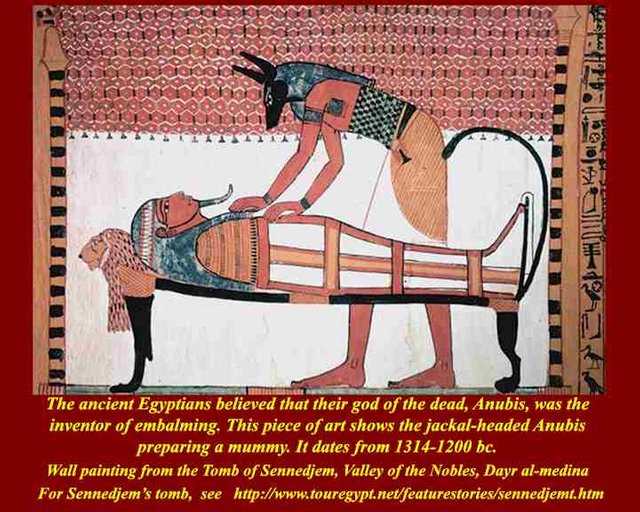The Egyptians believed that in order to enjoy the afterlife their bodies had to be preserved intact and so they developed the art of mummification. The word mummy comes from the Arabic mumiya, ‘bitumen’, since preserved corpses blackened by age were once thought to have been soaked in tar.
The embalming process process began by making an incision in the abdomen through which the intestines, lungs, liver and stomach were removed. The brain was extracted through a cut in the base of the skull. These were preserved separately and stored in jars alongside the body ( in later times, they were returned to the body). To remove all the body fluids, the corpse was packed in natron, a natural salt from a dried lake in the Nile delta containing a high proportion of sodium bicarbonate. It is thought that this was the reason why after six to eight weeks the body was dry and stable. Finally, the body was wrapped in several layers of linen bandages, before being placed in a coffin and laid in the tomb.

Gods of the afterlife Jackal- headed Anubis was an ancient Egyptian god of the dead, particularly associated with the funeral cult. He was considered to be the inventor of embalming, an act he first performed on the god Osiris, who , aptly for the ruler of the dead, is often represented as a mummy.
The mummy case After bandaging, the face of the mummy was sometimes covered with a mask. The mummy was then placed in a contoured wooden coffin. This was plastered, then painted with an idealised figure of the deceased.